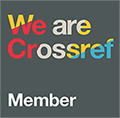Öğrencilerin Üçlü Kodlama Modelinde Sunulan Sayısal Büyüklükleri Sayı Doğrusunda Tahminleri
DOI:
https://doi.org/10.33308/26674874.2021352306Anahtar Kelimeler:
Basamak değeri- İlkokul- Matematik başarısı- Sayı doğrusunda tahmin- Üçlü kodlamaÖzet
Bu araştırmada, ilkokul ikinci ve üçüncü sınıf öğrencilerinin üçlü kodlama modeline göre sunulan sayısal büyüklüklerin sayı doğrusunda tahmin becerilerinin matematik başarısı, aritmetik performansı ve basamak değeri kavrayışı ile ilişkisi incelenmiştir. Araştırmanın verileri, matematik başarı testi (MBT), aritmetik performans testi (APT), basamak değeri testi (BD) ve bilgisayar yazılımı olarak hazırlanan sayı doğrusunda tahmin testleri (SDT) ile toplanılmıştır. Bilgisayar ortamındaki testler araştırmacılar tarafından geliştirilmiş olup üçlü kodlama modeline göre tasarlanan sembolik, sözel ve görsel (kanonik ve rastgele çokluklar) kodlardan ve 0-10 ile 0-100 sayısal aralıklardan oluşmaktadır. Araştırmanın çalışma grubunu İç Anadolu Bölgesi’nde bulunan bir ilden toplam 214 ikinci ve üçüncü sınıf öğrencisi oluşturmuştur. Bulgular, üçüncü sınıf öğrencilerinin tüm testlerde sayı doğrusu üzerinde tahminlerinin ikinci sınıf öğrencilerine göre daha doğrusal olduğunu göstermektedir. Her sınıf düzeyinde MB testine göre belirlenen alt ve üst başarı grubunda yer alan öğrencilerin başarısı APT, BD, SDT 0-10 ve 0-100 açısından farklılaşmaktadır. Bu farklılaşmanın özellikle APT ve BD testleri açısından daha belirgin olduğu görülmüştür. Üçüncü sınıfta alt ve üst gruplar arasındaki başarı farkı daha da açılmaktadır. Üçlü kod modeline göre tasarlanan 0-10 tahmin aralığındaki testlerden Sözel 0-10 ve Kanonik 0-10 matematik başarısını daha çok yordamaktadır. Basamak değeri kavrayışını en çok Sembol 0-10 yordarken, aritmetik performansını en çok Kanonik nokta sayılama 0-10 yordamaktadır. 0-100 aralığındaki tahmin testlerinde ise, matematik başarısını en çok Sembol 0-100 yordarken, basamak değeri kavrayışını da Sembol 0-100 ve Rastgele nokta sayılama testleri yordamaktadır. Farklı temsil biçimleri ile öğretimin çocukların kapsamlı matematik kavrayışları açısından daha yararlı olacağı sonucuna varılabilir.
İndirmeler
Referanslar
Ansari, D. (2010). Neurocognitive approaches to developmental disorders of numerical and mathematical cognition: The perils of neglecting the role of development. Learning and Individual Differences, 20(2), 123-129.
Berch, D. B., Geary, D. C., & Koepke, K. M. (2016). Introduction: How the study of neurobiological and genetic factors can enhance our understanding of mathematical cognitive development. D. B. Berch, D. C. Geary, & K. M. Koepke (Ed.), Development of mathematical cognition: Neural substrates and genetic influences (Volume 2) (s. 1-24) içinde. San Diego: Academic Press.
Berteletti, I., & Booth, J. R. (2016). Finger representation and finger-based strategies in the acquisition of number meaning and arithmetic. D. B. Berch, D. C. Geary, & K. M. Koepke (Ed.), Development of mathematical cognition: Neural substrates and genetic influences (Volume 2) (s. 109-139) içinde. San Diego: Academic Press.
Booth, J. L., & Siegler, R. S. (2006). Developmental and individual differences in pure numerical estimation. Developmental Psychology, 42(1), 189-201.
Campbell, J. I., & Epp, L. J. (2005). Architectures for arithmetic. J. I. D. Campbell (Ed.), Handbook of mathematical cognition içinde (s. 347-360). Taylor & Francis, Inc.
Canto-López, M. C., Aguilar, M., García-Sedeño, M. A., Navarro, J. I., Aragón, E., Delgado, C., & Mera, C. (2021). Numerical estimation and mathematical learning methodology in preschoolers. Psychological Reports, 124(2), 438–458.
Dehaene, S. (2003). The neural basis of the weber-feschner law: A logarithmic mental number line. Trends in Cognitive Sciences, 7(4), 145-147.
Dehaene, S. (1992). Varieties of numerical abilities. Cognition, 44(1-2), 1-42.
De Smedt, B. (2016). Individual differences in arithmetic fact retrieval. In D. B. Berch, D. C. Geary, & K. M. Koepke (Ed.), Development of mathematical cognition: Neural substrates and genetic influences (Volume 2) (s. 219-243) içinde. San Diego: Academic Press.
Fayol, M., & Seron, X. (2005). About numerical representations: Insights from neuropsychological, experimental, and developmental studies. J. I. D. Campbell (Ed.), Handbook of mathematical cognition (s. 3–22) içinde. Taylor & Francis, Inc.
Fidan, E. (2013). İlkokul öğrencileri için matematik dersi sayılar öğrenme alanında başarı testi geliştirilmesi. (Yayımlanmamış Yüksek Lisans Tezi), Ankara Üniversitesi, Ankara.
Geary, D. C., Hoard, M. K., Nugent, L., & Byrd-Craven, J. (2008). Development of number line representations in children with mathematical learning disability. Developmental Neuropsychology, 33(3), 277-299.
Geary, D. C., Hoard, M. K., Byrd‐Craven, J., Nugent, L., & Numtee, C. (2007). Cognitive mechanisms underlying achievement deficits in children with mathematical learning disability. Child development, 78(4), 1343-1359.
Gilmore, C. K., McCarthy, S. E., & Spelke, E. S. (2010). Non-symbolic arithmetic abilities and mathematics achievement in the first year of formal schooling. Cognition, 115(3), 394-406.
Herzog, M., Fritz, A., & Ehlert, A. (2017). Entwicklung eines tragfähigen Stellenwertverständnisses [Development of a resilient place value understanding]. A. Fritz and S. Schmidt (Ed.), Handbuch rechenschwäche içinde (s. 266–286). Basel: Beltz.
Landerl, K., Bevan, A., and Butterworth, B. (2004). Developmental dyscalculia and basic numerical capacities: a study of 8-9-year-old students. Cognition, 93(2), 99-125.
Landerl, K. (2013). Development of numerical processing in children with typical and dyscalculic arithmetic skills—a longitudinal study. Frontiers in Psychology, 4, 459.
Landerl, K. (2019). Neurocognitive perspective on numerical development. A. Fritz, V. G. Hasse, & P. Rasanen (Ed.), International handbook of mathematical learning difficulties (s. 9-24) içinde. Cham: Springer,
Libertus, M. E. (2019). Understanding the link between the approximate number system and math abilities. D. C. Geary, D. B. Berch, & K. Mann Koepke (Ed.), Cognitive foundations for improving mathematical learning (Vol. 5), içinde (s. 91-106): Academic Press.
Looi, C. Y., Thompson, J., Krause, B., & Cohen Kadosh, R. (2016). The neuroscience of mathematical cognition and learning. OECD Education Working Paper No. 136. Erişim adresi: http://disde.minedu.gob.pe/bitstream/handle/123456789/4665/The%20Neuroscience%20of%20Mathematical%20Cognition%20and%20Learning.pdf?sequence=1&isAlAlted=y
Long, I. S. A. (2019). Cognitive factors predicting variation in arithmetic performance (Doctoral dissertation). UK: University College London
Mutlu, Y., & Sarı, M.H. (2019). İlkokul öğrencilerinin basamak değeri kavrayışlarının geliştirilmesi. Kastamonu Education Journal, 27(2), 657 667.
Olkun, S. Can, D., & Yeşilpınar, M. (2013). Hesaplama performansı testi: geçerlilik ve güvenilirlik çalışması. XII. Ulusal Sınıf Öğretmenliği Eğitimi Sempozyumunda tam metin kitabı. Aydın: Adnan Menderes Üniversitesi. ss.89-92.
Olkun, S., & Akkurt-Denizli, Z. (2015). Using basic number processing tasks in determining students with mathematics disorder risk. Dusunen Adam: The Journal of Psychiatry and Neurological Sciences, 28, 47-57.
Olkun, S., Altun, A., Göçer Şahin, S., & Akkurt-Denizli, Z. (2015). Deficits in basic number competencies may cause low numeracy in primary school children. Education and Science, 40(177), 141-159.
Olkun, S., Mutlu, Y., & Sarı, M.H. (2017). The relationships between number sense and mathematics achievement. International Conference on Education and New Developments 2017, June 24-26, Lisbon, Portugal
Olkun, S., Sarı, M.H., & Smith, G.G. (2019). Geometric aspects of number line estimations. Journal of Education and Future, 15, 37-46.
Paydar, S., & Sarı, M.H. (2019). İlkokul ikinci ve üçüncü sınıf öğrencilerinin basamak değeri kavrayışları (S.Olkun ve diğerleri, Ed.), İlköğretim çalışmaları bütünsel açıdan çocuk içinde (s. 97-116). Ankara: Pegem Akademi Yayıncılık.
Peters, L., De Smedt, B., & Op de Beeck, H. (2015). The neural representation of Arabic digits in visual cortex. Frontiers in Human Neuroscience, 9, 1-12.
Peters, L., Polspoel, B., de Beeck, H. O., & De Smedt, B. (2016). Brain activity during arithmetic in sembolic and non-sembolic formats in 9–12 year old children. Neuropsychologia, 86, 19-28.
Raven, J., Raven, J.C., & Court, J.H. (2000, updated 2004). Manual for Raven's Progressive Matrices and Vocabulary Scales. Section 3: The Standard Progressive Matrices.
Rousselle, L., & Noel, M. P. (2007). Basic numerical skills in children with mathematics learning disabilities: a comparison of symbolic vs non-symbolic number magnitude processing. Cognition, 102(3), 361-395.
Sarı, M.H., & Olkun, S. (2018). The relationships among number line estimations, mathematics achievement and place value concept. An International Conference on Education, Technology and Science 2018, May 6-9, Belgrade, Serbia.
Sarı, M.H., & Olkun, S. (2019). Relationship between place value understanding, arithmetic performance and mathematics achievement in general. İlköğretim Online, 18(2), 953-958.
Sarı, M. H., & Olkun, S. (2021). The relationships among number line estimations, mathematics achievement and place value understanding. Journal of Education and Future, 19, 37-47.
Sari, M.H., Herzog, M., Olkun, S., & Fritz-Stratmann, A. (t.y). Validation of a model of sustainable place value understanding in Turkey. [Araştırma bir dergide değerlendirme sürecindedir]
Sasanguie, D., Gobel, S. M., Moll, K., Smets, K., & Reynvoet, B. (2013). Approximate number sense, symbolic number processing, or number-space mappings: what underlies mathematics achievement? Journal of Experimental Child Psychology, 114(3), 418-431.
Siegler, R. S., & Booth, J. (2004). Development of numerical estimation in young children. Child Development, 75, 428-444.
Siegler, R. S., & Opfer, J. E. (2003). The development of numerical estimation: evidence for multiple representations of numerical quantity. Psychological Science, 14(3), 237-250.
Skagenholt, M., Träff, U., Västfjäll, D., & Skagerlund, K. (2018). Examining the triple code model in numerical cognition: An fMRI study. PLoS ONE, 13(6), 1-35.
Soares, N., Evans, T., & Patel, D. R. (2018). Specific learning disability in mathematics: a comprehensive review. Translational Pediatrics, 7(1), 48-62.
Wilson, A. J., & Dehaene, S. (2007). Number sense and developmental dyscalculia. In D. Coch, G. Dawson ve K. Fischer (Eds.), Human behavior, learning, and the developing brain: Atypical development (pp. 212–238). New York: Guilford Press.
Wu, S. S., Willcutt, E. G., Escovar, E., & Menon, V. (2014). Mathematics Achievement and Anxiety and Their Relation to Internalizing and Externalizing Behaviors. Journal of Learning Disabilities, 47(6), 503–514.
İndir
Yayınlanmış
Nasıl Atıf Yapılır
Sayı
Bölüm
Lisans
Telif Hakkı (c) 2021 Yaşadıkça Eğitim

Bu çalışma Creative Commons Attribution-NonCommercial-NoDerivatives 4.0 International License ile lisanslanmıştır.
Sisteme yüklemiş olunan makalenin kapsamı, sunduğu bulgular ve sonucu ve yorumları konusunda Yaşadıkça Eğitim [YE] dergisi Sahibi, Editör, Editör Yardımcısı, Hakemler ve Editör Kurulu'nun hiçbir sorumluluk taşımadığını kabul ederim.
Makalenin özgün olduğunu, herhangi bir başka dergiye yayımlanmak üzere gönderilmediği, daha önce yayımlanmadığını Yaşadıkça Eğitim [YE] dergisi Editörlüğü'ne beyan ederim.
Başlığı belirtilen makalenin, 5846 sayılı Fikir ve Sanat Eserleri Yasasının 22. maddesi gereğince çoğaltma, 23. maddesi gereğince yayma ve 25. maddesi gereğince her türlü taşıyıcı materyal üzerinde veya elektronik ortamda kamuya iletim haklarını Yaşadıkça Eğitim [YE] dergisine karşılıksız, koşulsuz ve süresiz olarak devredildiği, makale ile ilgili devredilen hakların dilediği zaman, mekan ve koşullarda kullanmaya Yaşadıkça Eğitim [YE] dergisinin yayıncısı olarak İstanbul Kültür Üniversitesi'nin yetkili kılınacağını onaylarım.





